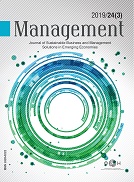Applications of ‘Pitching Research’ in an Emerging Economies Research Journal: Insights and Reflections
DOI:
https://doi.org/10.7595/management.fon.2018.0012Keywords:
pitching research, new research ideas, pitching, template, research proposal, novice researcher, reverse pitching, pitch sparring, pitching abstractAbstract
Research Question: Can we create a highly structured (but practical) abstract, which communicates the essential elements demanded by an expert scholarly reader? Motivation: A key aim of this journal is to enable “relevant information exchange and communication”. Information overload mean that readers are easily lost. Right at the start, poorly designed abstracts can fail to “hook” readers. Lost readers: is bad for authors, editors and for the journal. What’s new? While structured abstracts are not new, the “synergistic” combination of elements, combined with succinct guidance on content, is where the novelty lies. So what? Engaging readers in this way should lead to more journal activity – more reads, cites, submissions – and, ultimately, to an enhanced profile/reputation in the scholarly community. Idea: Building on Faff (2015, 2017) and Faff et al. (2017e) [“reverse engineering” and “pitch sparring”], we adapt the “Pitching Research” [PR] framework to create a structured and engaging abstract. Data: The “experimental” setting involves a sample of six high-performing non-research students, who signed up to an intense 4-week “research scholar” program over Winter 2017, at University of Queensland. Tools: The “Winter Scholars” are first taken through an “immersion treatment” on the PR framework. During this process, the students form three teams and each team is assigned an article to “spar” a reverse-engineered pitch summary-abstract. There are several iterative rounds of abstract design. Findings: The original pitch is limited to 1,000 words, an initial condensed abstract aims for 400 words and the final version is modified to 350 words. Three examples of the final structured abstract are created in Accounting, Finance and Management, providing “soft” “proof of concept”. Contribution: By creating a simple, focused and structured new abstract design adopted by this journal, we enhance the ability of the journal to meet its primary aim of enhancing “relevant information exchange and communication”. Over time, with growing use and application in this journal the reach of this contribution grows too. More generally, we argue that this novel abstract design increases awareness of the broader PR framework, helping readers and especially novice researchers better understand, describe and ultimately design their own scholarly research.








